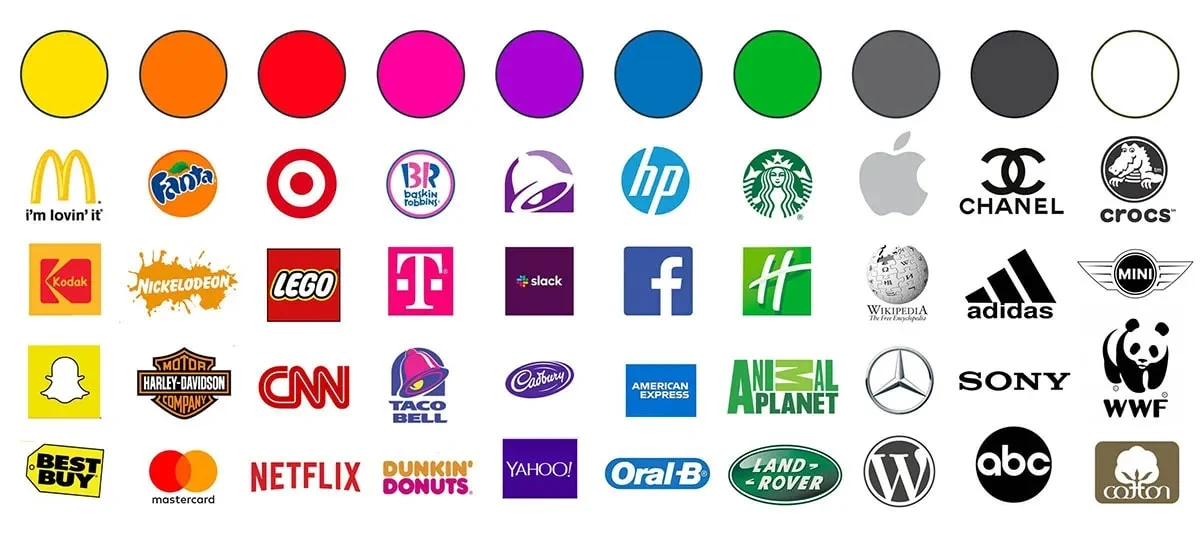
Logo Design Psychology: How Colors and Shapes Influence Customers
Discover how strategic logo design elements including colors, shapes, and typography influence customer perceptions and purchasing decisions through psychological principles.
Logo Design Psychology: How Colors and Shapes Influence Customers
Logo design psychology leverages human perception and cognition to create visual identities that influence behavior, build emotional connection, and drive business results. Through strategic use of color, shape, typography, and symbolic elements, logos communicate attributes that customers process in milliseconds—long before they read a single word.
The most effective logos operate on multiple psychological levels at once: they create instant recognition, convey personality, build trust, and differentiate from competitors. Thoughtful choices transform a simple mark into a tool for long-term brand building and acquisition.

The Science of Visual Perception and Brand Recognition
Human brains process visuals far faster than text, making logos crucial for first impressions that shape every subsequent interaction. Key mechanisms include:
- Pattern recognition & memory: Distinctive forms attach to positive experiences and boost recall.
- Cognitive load reduction: Simple, memorable marks are easier to parse across sizes and contexts.
- Emotional triggers: Color, shape, and symbolism evoke feelings that influence preference beyond rational analysis.
- Cultural associations: Meanings vary by market; effective marks respect context.
- Visual hierarchy: Good composition keeps the most important brand information prominent.
Color Psychology in Logo Design
Color carries powerful subconscious associations:
- Red: energy, urgency, passion — attention-grabbing but use carefully to avoid aggression.
- Blue: trust, stability, professionalism — common in finance, healthcare, and tech.
- Green: growth, prosperity, sustainability — aligns with wellness and eco messages.
- Yellow/Orange: optimism, creativity, friendliness — warm and visible; balance to keep it premium.
- Purple: luxury, creativity, sophistication — can justify premium positioning.
- Black & White: elegance, timelessness, maximum contrast — strong for premium or minimalist brands.
Always test for contrast and accessibility—legible marks convert better and serve more people.
Shape Psychology and Symbolic Meaning
Geometric forms carry built-in meanings:
- Circles: unity, harmony, safety; great for community and protection themes.
- Triangles/Angles: direction, progress, strength; can feel innovative or aggressive.
- Squares/Rectangles: structure, reliability, order; trustworthy but can feel conservative.
- Organic curves: creativity, warmth, natural qualities; humanize and soften.
- Symmetry: balance and credibility (but beware “too static”).
- Abstract forms: unique and ownable; meaning accrues with consistent use.
Typography Psychology in Logo Design
Type choices shape perception:
- Serif: tradition, credibility, authority (can read conservative).
- Sans-serif: modern, clear, approachable (digital-friendly).
- Script/Handwritten: craftsmanship, personality (watch legibility).
- Bold weights: strength and impact (balance to avoid shouting).
- Light weights: elegance and refinement (mind small sizes/low-res).
- Custom type: maximum distinctiveness and ownership.
Cultural Considerations and Global Brand Psychology
- Color symbolism shifts by culture; research before finalizing palettes.
- Religious & historical references can trigger unexpected reactions.
- Aesthetic preferences (symmetry, complexity) vary internationally.
- Reading patterns impact layout decisions (e.g., LTR vs RTL).
- Language flexibility matters for lockups and multilingual use.
Industry-Specific Logo Psychology
- Technology: innovation and precision; modern forms + cool palettes.
- Healthcare: care and competence; calming colors and clean marks.
- Financial services: stability and prosperity; conservative color, strong shapes.
- Food & beverage: appetite appeal; warm hues and organic cues.
- Luxury: restraint and refinement; sophisticated typography and spacing.
- Sustainability: natural forms; authentic green usage without cliché.
Logo Versatility and Application Psychology
A great logo works everywhere:
- Scalability: recognizable from favicon to billboard.
- Color systems: single-color and grayscale variants retain impact.
- Backgrounds: light/dark adaptability without losing clarity.
- Digital optimization: crisp at small sizes and on variable screens.
- Print realities: inks, papers, finishes, and reproduction methods.
- Motion: tasteful animation that preserves the mark’s core structure.
Measuring Logo Effectiveness and Psychological Impact
Connect identity to outcomes:
- Recognition tests: speed and accuracy of identification.
- Emotional response: surveys, focus groups, biometrics.
- Recall studies: memory over time and across contexts.
- A/B testing: compare variants with statistical confidence.
- Conversion impact: track engagement, leads, and sales lift.
- Brand tracking: perception, preference, and distinctiveness over time.
Common Logo Design Psychology Mistakes
- Over-complexity that increases cognitive load and kills recall.
- Inconsistent color or style across touchpoints.
- Cultural insensitivity or confusing symbolism.
- Chasing trends over strategy (fast to date, slow to build equity).
- Generic forms that fail to differentiate.
- Ignoring real-world applications (digital, print, signage, apparel).
Future Trends in Logo Psychology
- Minimalism & simplification for cluttered environments.
- Dynamic/adaptive systems that flex per context while staying recognizable.
- Sustainability cues with authentic, non-token visuals.
- Inclusive design for broader accessibility and resonance.
- Interactive/AR motion used thoughtfully.
- Data-informed refinement via testing and AI-assisted insights.
Conclusion
Psychology-aware logo design builds recognition, trust, and preference by aligning color, shape, and type with human perception and cultural context. The brands that invest in strategic, tested identity systems—and apply them consistently—win attention today and equity over time.
Want a mark that resonates and converts? Contact Uptrade Media to craft a psychologically informed logo system aligned to your market and goals.